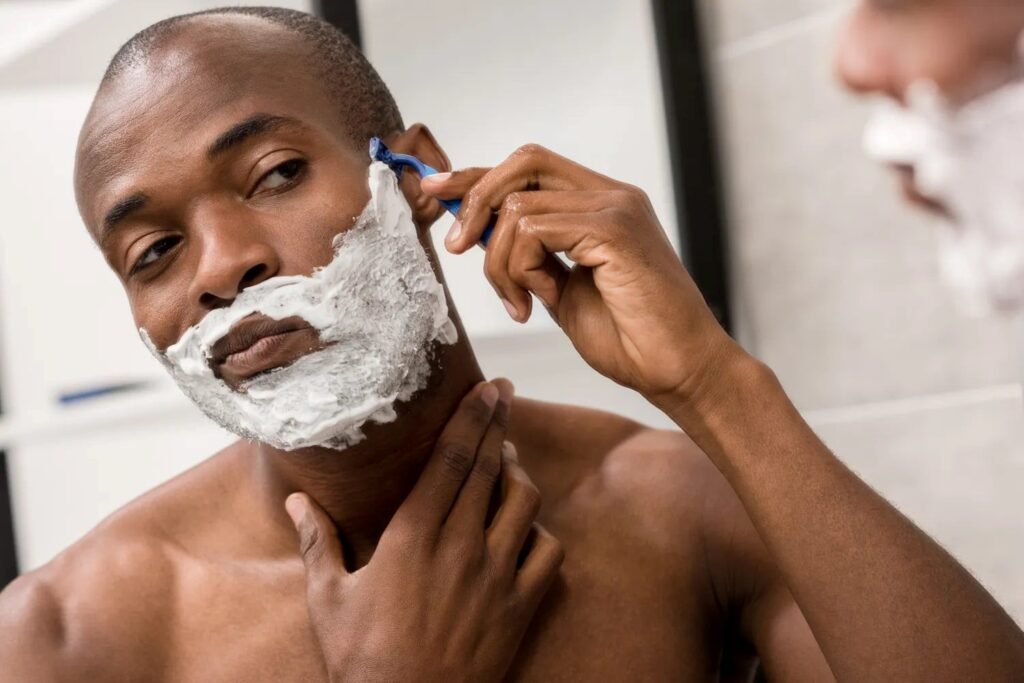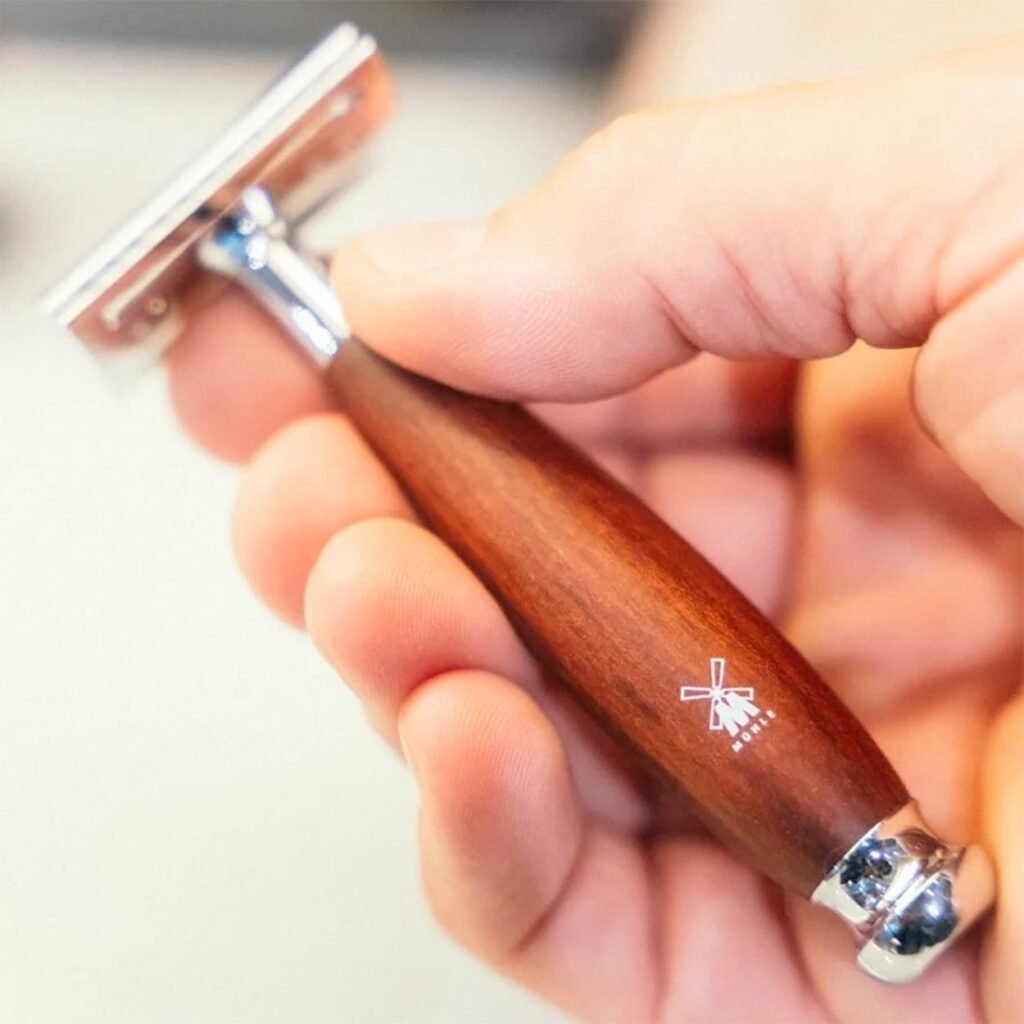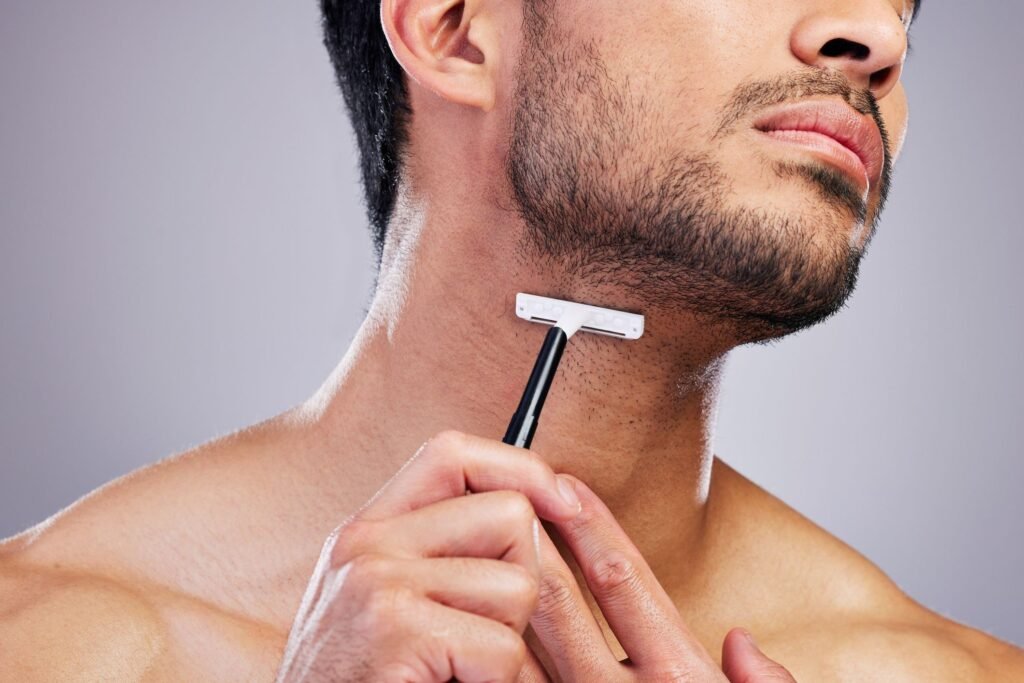
Shaving with sensitive skin is a challenge that many men face daily. Redness, razor burn, bumps, and irritation can turn a basic grooming task into an uncomfortable experience. But the problem often lies not in the act of shaving itself, but in how it’s done. With the right preparation, tools, and aftercare, you can achieve a smooth shave without triggering your skin’s defenses.
Whether you deal with occasional flare-ups or chronic sensitivity, these shaving tips are designed to help you protect your skin, reduce irritation, and enjoy a cleaner, more comfortable shave. You’ll also discover how products like natural beard oil and men’s beard balm can play a role in post-shave recovery and skin maintenance.

The first rule for shaving sensitive skin is using the correct razor. Multi-blade razors might give you a close shave, but they also increase the likelihood of irritation because they pull and cut the hair multiple times in a single pass. Instead, go for a razor with one or two blades. A safety razor or a single-blade cartridge can give a smooth finish without aggravating your skin.
Also, ensure the razor is clean and sharp. Using dull blades is one of the quickest ways to cause razor burn. Replace blades regularly to prevent tugging and unnecessary friction.

Preparation is everything. Always wash your face or the area you plan to shave with warm water and a gentle, fragrance-free cleanser. This helps remove excess oil, dead skin, and dirt, and it softens the hair for a smoother shave.
A warm towel held against your skin for a couple of minutes can also help open up pores and make facial hair easier to cut. This step is especially useful if your hair is coarse or your skin tends to react to even minor pressure.

Not all shaving creams are created equal. Many mass-market products contain alcohol, menthol, artificial fragrances, or harsh chemicals that can dry out or irritate sensitive skin. Look for a high-quality shaving cream or gel that is labeled for sensitive skin and contains calming ingredients such as aloe Vera, glycerin, or chamomile.
A rich, creamy texture creates a better buffer between the blade and your skin, reducing friction and allowing for a smoother glide. The fewer passes you need with your razor, the better your skin will feel afterward.

Dry shaving is one of the worst things you can do to sensitive skin. It causes excessive friction, dragging, and ultimately, microtears. These small cuts can lead to inflammation, redness, and even infection.
If you ever find yourself without shaving cream, apply a few drops of natural beard oil instead. It provides a slick surface for your razor to glide over and helps prevent tugging. Natural beard oil is also packed with moisturizing and anti-inflammatory properties that benefit sensitive skin during and after shaving.

You might think that shaving against the grain gives a closer result, but for sensitive skin, it is a shortcut to irritation. Always shave in the direction your hair naturally grows. This minimizes the risk of nicks, razor bumps, and ingrown hairs.
You can figure out the grain of your hair by rubbing your hand over the stubble. The direction that feels smooth is with the grain. Stick to it and you’ll notice a significant reduction in post-shave discomfort.

Avoid pressing down hard with the razor. Let the weight of the blade do the work. Applying too much pressure can scrape the skin, leading to redness and sensitivity.
Use short, controlled strokes, especially in tricky areas like the neck or jawline. Rinse the blade often during the shave to remove built-up cream and hair, which can cause drag and reduce the efficiency of the blade.

After shaving, rinse your skin with cool or cold water. This helps to close the pores and calm the skin. It’s a simple step, but it makes a noticeable difference in reducing inflammation and tightening the skin.
Pat your skin dry with a soft towel. Do not rub, as this can aggravate freshly shaved skin and cause micro-abrasions.

Post-shave hydration is essential for everyone, but especially for those with sensitive skin. Apply a soothing, alcohol-free moisturizer or balm right after drying your skin. This helps lock in moisture and forms a barrier that protects against environmental irritants.
Using a natural beard oil right after shaving can also provide hydration and nourishment to the skin. It’s light, absorbs quickly, and contains ingredients like jojoba, argan, or sweet almond oil that help calm inflammation and support skin healing.

Even if you shave regularly, incorporating a men’s beard balm into your skincare routine can benefit sensitive skin. Beard balms are not just for shaping or styling. When they contain natural ingredients like shea butter and beeswax, they can form a protective layer on the skin.
This layer locks in moisture, shields against pollutants, and reduces the effects of dry air or harsh weather. Applying a small amount of men’s beard balm after your shaving routine can keep your skin soft, nourished, and irritation-free.

Exfoliating helps prevent ingrown hairs and keeps skin smooth. However, exfoliating immediately before shaving can over-sensitize your skin and increase the risk of irritation. Instead, exfoliate once or twice a week on days you are not shaving.
Use a gentle scrub with fine particles or a chemical exfoliant like lactic acid to help lift dead skin cells and free trapped hairs. Regular exfoliation helps the razor move more smoothly across the skin in future shaves.

A dirty or rusty razor is a recipe for disaster, especially when your skin is sensitive. After each shave, rinse the blade under hot water to remove hair and cream residue. Shake off excess water and let it air dry completely.
Never store your razor in a damp environment like the shower, as this encourages bacterial growth and blade corrosion. You can also occasionally clean your razor with rubbing alcohol to disinfect it.
If you prefer keeping a beard or partial stubble, you still need to care for your skin underneath. Washing your beard daily with a mild cleanser helps remove dirt and oil buildup. Follow up with natural beard oil to keep the skin beneath hydrated and flake-free.
For extra care and styling, use a men’s beard balm. It tames frizz, provides hold, and nourishes both the beard and the skin beneath. This is especially helpful in dry climates or during winter when your skin is prone to dryness.
Shaving with sensitive skin doesn’t have to be painful or frustrating. The key is to build a routine that puts your skin’s needs first. From choosing the right razor and prepping your skin properly to using hydrating products like natural beard oil and men’s beard balm, every step matters.
Take your time, be gentle, and invest in the right tools and products. With these 11 shaving tips, you’ll transform your grooming experience and finally say goodbye to irritation, redness, and discomfort. Healthy skin is not just about what you do, it’s also about what you use and how consistently you care for it.
© 2025 The RavenWise. All Rights Reserved.